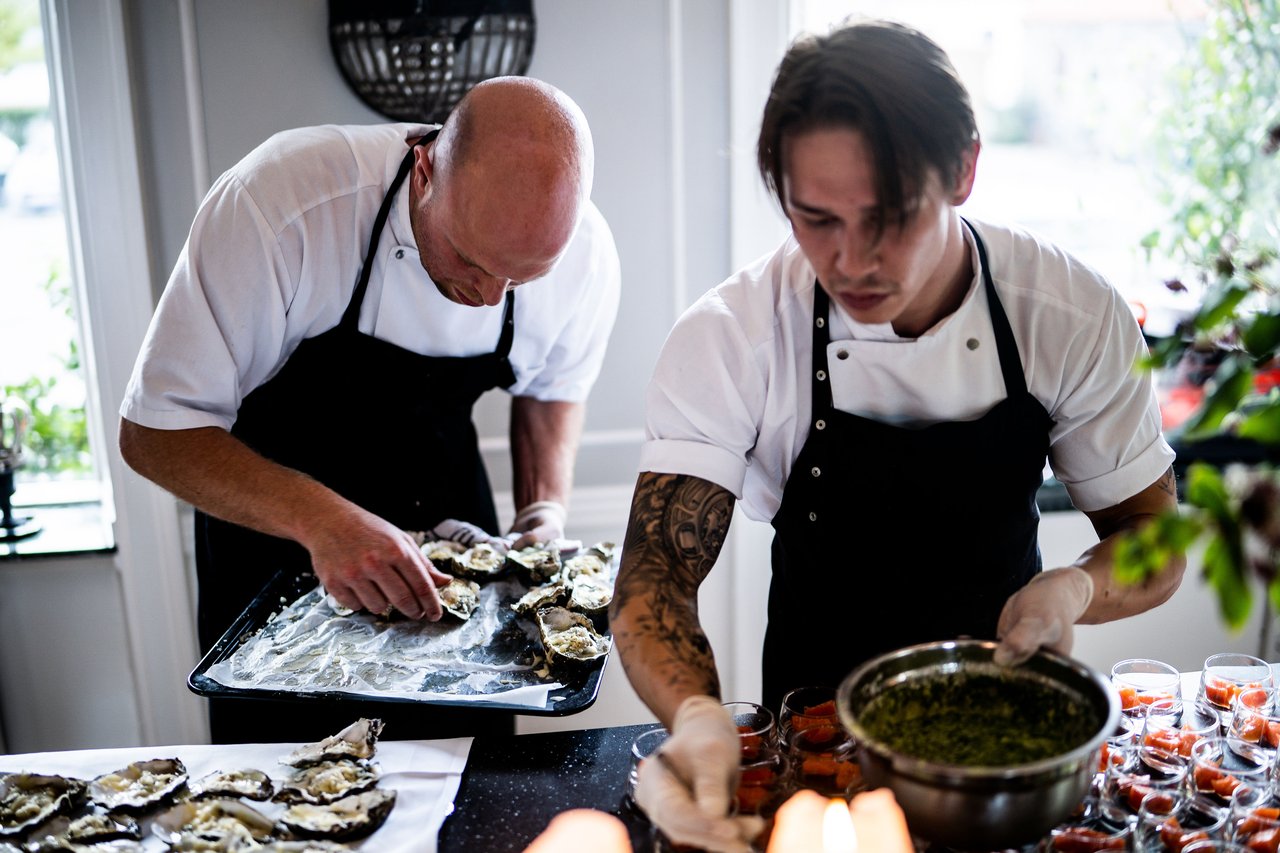
With the pandemic has come the awful realisation that most food service businesses are going to take years to recover, and BBQ Catering companies are no exception to this. Expensive “Brick-and-Mortar” venue rental fees have forced thousands of restaurants into bankruptcy and deterred many more from entering the barbecue catering field. This has driven a whole new generation of ‘food service entrepreneurs’ to look at off premise catering as a more tangible route.
Without the need for your own brick-and-mortar venue and by shifting focus onto off-site catering, you can instead operate from; a shared commissary kitchen, make use of a local community/church kitchen or convert your garage into a base for your business (you will want to make sure you give it a good clean first of course). Food Trucks also offer a temporary kitchen facility, however you may be limited to how much prep you can achieve in the limited space. There are many solutions to help you start a successful catering business whilst avoiding crippling fixed property and insurance costs.
Although it is a very exciting moment when you take the first steps in planning your own BBQ Catering company, there are certain things that you should consider first to help minimize the hurdles of the industry and help you hit the ground running. This blog is tailored to help you overcome three specific ones which include; raising capital to start your business, industry research and knowing how much to charge your customers, and efficient marketing on a small budget.

Raising Capital
You will need to raise capital to start your business, that’s a given, but you should still think twice before you cash in your 401K or borrow your Nans life savings. You are going to need sufficient capital to purchase equipment, vehicles and to pay yourself until your business is operating profitably which is going to take some time, but be patient and persistent and it will happen. Before you can approach a lender you have to first of all complete a detailed business plan that outlines your strategy and proves you are dedicated to your craft. A good outline of a business plan with a template for you to potentially use can be found here.
Once you have completed your business plan and outlined how much capital you need to get started you need to research grants that may be available to you. A good idea is to find out about government sponsored grants; your local community Business Enterprise Centre or equivalent should be able to provide advice on local enterprise grants aimed at Start-Ups.
Financing your major purchases such as stoves, smokers, walk in chills and vehicles is also a good idea, not only does it spread out the cost allowing you to have more available cash flow but you can also claim tax relief on your payments. Companies such as Silver Chef in Canada and CIT in the US often offer "rent to own" or lease options over 1-5 years with very competitive interest rates.
The nice thing about living in the 21st century is that through access to the internet you can do a lot of this research, and even the applications themselves, from the comfort of your own home. Before you commit to any one way of financing or funding your business, make sure you take some time to look into all of the different options out there that might be available to you. It could be the difference between getting cooking, or getting burnt.

Industry Research and Knowing How Much To Charge
Probably one of the most important things for you to do when starting your business is to gain an understanding of the industry and market that you are going to be operating within. This includes collecting information on your competitors, potential venues where you can cater, target markets, local suppliers, etc. You really shouldn’t attempt to set your menus or pricing until you have this info as you might end up underpricing your services and selling yourself short, or on the other hand over pricing and losing out on potential customers.
An easy way to begin collecting this information is to simply use an excel spreadsheet and your trusted friend “Google” to start researching the people and organizations in your area. You would never see a Subway or other franchise company open in a town without the parent company doing research on demographics of the area and competition. You can find help in conducting your competitor research here.
When it comes to deciding how to charge there are many formulas for calculating your selling price, often based on 3 or 4 times your food cost. Be warned though, you must first know your portions/wastage/supply availability/order quantities etc. before you commit to your pricing.
If you are only planning to sell 50 portions a day you need to make a lot more profit on each item compared to if you were to be selling 500 portions.
For example:
50 portions of pulled pork on a bun @ $7 each = 350.00 sales
Food cost approx 1.50 per prt 75.00
Profit before labor and overheads 275.00
500 portions of pulled pork on a bun @ $5 each = 2,500 sales
Food cost @ 1.50 each 750
Profit before labor and overheads 1,750
This example shows that it is far more profitable to cater for a larger number at a lower price, as many of your overhead costs such as travel expenses, fuel, etc are a fixed cost and can be spread out over a larger number of purchases. This concept is called “economies of scale” whereas the more goods you produce, the less it costs to produce each individual good.
Your time is your only resource that is limited - therefore you need to consider how to make the most amount of money at each event. You may need to adjust your price margin up or down to take into consideration the financial value of each particular event. You need to know what your competitors are charging so that you do not quote too high and lose the business or quote too low and lose potential profit.
Getting to know your suppliers is important, establishing rapport with them and finding out what food items they may have on special or are cheap at certain times of year can save you hundred if not thousands of dollars in profit throughout the year. Another tip is to be careful not to include seasonal items in your menu at a fixed price for the entire year. Corn on the Cob is a good example; in season it costs around 10 cents a husk, however out of season it can cost over $1 a husk.
Another useful practice is to complete a “SWOT Analysis”, this is an encompassing analysis that looks at the internal aspects of your business (ie. your strengths and weaknesses), and the external factors associated with your business as well (ie. opportunities and threats within your industry). Conducting this analysis will allow you to figure out your place within the local BBQ catering market.
You need to identify the unique aspect of your business, something that makes you stand out from your competitors, you cannot do this until you know what everybody else in your sector is doing. This could be that you are the only company that offers Pig Roasting or perhaps you cook rotisserie chickens fresh on site at events seasoned with a range of fresh herbs and spices. Rustic barns are becoming more and more popular allowing clients to theme their own event, in order to be able to cater at these types of venues you need to ensure that your equipment is portable, 5inch castors don’t cut it when you are trying to wheel your 200lb barbecue across a gravel yard. You can find some great information on how to conduct a SWOT analysis here.

How to attract customers - Efficient Marketing on a small budget
Marketing and sales go hand in hand, but sometimes can be confused for the same thing. Marketing is a role that is played within the sales process and it is something that you cannot afford to forget about.
Firstly, as part of your business plan you should have identified who your potential customers are, be it office workers, backyard parties, festival goers, weddings, etc. each market segment needs to be marketed to in a different way, hence you need a structured Marketing Plan that clearly sets out goals for attracting clients in each of your desired markets with monthly tasks to be completed. A good guideline for creating your marketing plan can be found on Forbes here.
You should try to avoid costly print advertising where you can. Instead it is a good idea to partner with your local charities and established local organizations that will give you access to their own members and marketing streams, create goodwill and exposure within the community, and create a lasting relationship with the organization that will result in repeat business. Another inexpensive option is to capitalize on social media marketing. Channels such as Instagram offer you a free platform to promote your business to your target market. Marketing through Facebook ads allows you to; set daily budgets, select specific demographics, locations, and interests allowing you to focus on the people that are most likely to book you, and best of all, almost everyone and their dog nowadays is on social media, literally. If you do not have experience in this field then find somebody who does as it is critical to your success.


